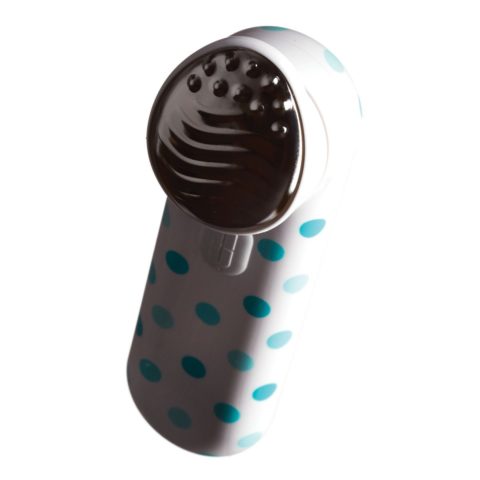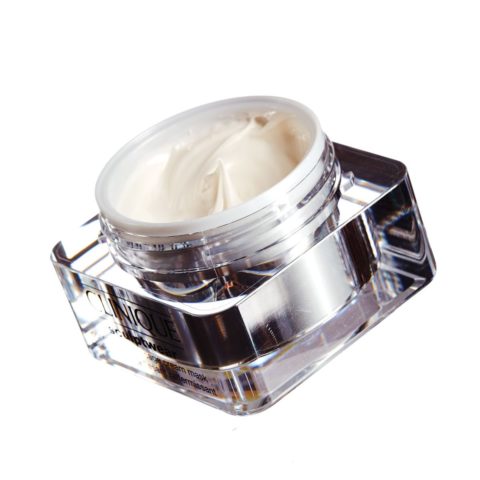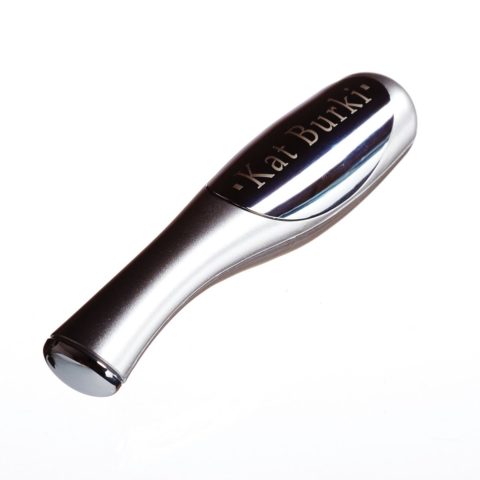5 face massage tools that look NSFW but will do wonders for your skin

Massage has the power to make our skincare work better. A crop of new tools means the key to a brighter, wrinkle-free complexion may be in the palm of your hand.
To say celebrity facialist Nichola Joss uses massage during her treatments is an understatement. The London-based skin whisperer’s signature technique involves kneading and prodding the jawline and cheeks, from both outside and inside of the mouth. Joss applies so much wince-inducing pressure, she often checks with clients to ensure it’s not too much. Temporary discomfort aside, the results—a more sculpted, lifted face—keep clients, like Kate Moss and Cate Blanchett, coming back for more.
It’s an approach that is decidedly more hardcore than that of most aestheticians, but Joss can attest to the skincare benefits of a good complexion rubdown. “Applying massage and warming up the skin increases blood flow and opens up the energy in the skin and muscles,” she says. “Our body relaxes, as does the skin, and it becomes more accepting of ingredients, which drives them deeper into the skin and helps them work more efficaciously.”
Facialists have long known the power of touch and its ability to maximize skincare performance. Now, the concept is catching on with skincare brands, and some have launched specialized beauty tools to boost the efficacy of their anti-aging elixirs. Take Chanel’s limited edition Sublimage La Crème Yeux eye cream, which comes with a massage tool to help quell puffiness. Then, there’s wellness guru-turned-skincare creator Kat Burki’s battery-operated, vibrating Micro-Firming Wand, which can be used with any of her products. The pairing of topicals with tools makes sense: Today’s supercharged formulas contain plenty of powerful ingredients, sending expectations soaring for instant and measurable results. Cosmetic companies realize that these gadgets could be the key to delivering a better return on our beauty investments.
“The skin is more responsive to active ingredients in your products, especially when applied with simple at-home massage techniques,” says renowned London facialist Clare Peters, who works with Cara Delevingne. Manipulating the skin also boosts its wound-healing response, which can translate to taut skin and minimized wrinkles. “Our face produces 100 times more collagen than our bodies, so any gentle massage will kick-start our skin’s natural ability to heal itself, resulting in improved skin tone and hydration,” says Peters. Bottom line: Banking on the new do-it-all wonder ingredient or layering on a billion different products is all well and good, but neither method will yield skincare rewards if you’re not applying products properly.
Until now, Clarins was among the only skincare brands associated with facial massage. Since it was founded by Jacques Courtin-Clarins more than 60 years ago, the French company has offered massage techniques tailored to products and needs. Its most famous method, the “Clarins Touch,” involves warming the product in your hands and applying it to the face and neck using gentle pressing motions, which can “intensify the [penetration] of the plant active ingredients,” says Dominique Rist, Clarins’s director of training and treatment development.
Banking on the new do-it-all wonder ingredient or layering on a billion different products is all well and good, but neither method will yield skincare rewards if you’re not applying products properly.
Other brands keen on replicating a facialist’s magic touch are moving from fingertips to tools. These devices are reminiscent of the Jade Roller, which dates back to 7th-century China, when empresses would use it to de-puff, calm and smooth their skin, as well as ward off negative qi (energy). Jade rollers remain popular today and likely inspired a host of copycat products in Japan and Korea, where everything from cheap plastic versions to top-of-the-line electronic twin-ball platinum models, such as the ReFa Carat, are all the rage.
Shiseido’s platinum-coated, double spherical Facial Massage Roller most closely resembles the latter, though without the electronic micro-currents. Instead, the dual-pronged device rolls gently over the skin’s contours and mimics an aesthetician’s hands. In true facialist fashion, the kneading strength can be adjusted by changing the angle of the roller, while the tool’s rounded tip can be used to target different acupuncture points.
There’s also The Body Shop’s Twin-Ball Revitalising Facial Massager. Designed to be used with its Oils of Life skincare range, it works to stimulate circulation, lift and tone the skin, and help deliver nourishing seed oils deep into the complexion. “It’s like a gym for the face,” says Vanda Serrador, The Body Shop’s facialist and body care expert. “Just like when we exercise—we sometimes use machines and sometimes we don’t—machines or tools can help enhance the process.” Serrador created an accompanying seven-step guide that emphasizes using the massager in upward motions along the chin, the centre of the face and the forehead with the products.
Much like a pro-quality foundation brush trumps your fingers in achieving a perfect canvas, massage tools can also compensate for poor technique. In fact, improper or lazy skincare application is a prevailing problem that celebrity dermatologist Dr. Harold Lancer sees often. “Most people don’t apply product properly—in terms of the amount, the uniformity and the consistency,” he says. “The method is important.”
Product spread is just one problem Clinique’s Sonic System Massage Treatment Applicator aims to address, says Dr. Tom Mammone, executive director of skin physiology and pharmacology, Clinique R&D Worldwide. “An applicator is a great way to enhance overall delivery.” Providing a powered-up facial experience, it features a subtly grooved metal head that attaches to the electronic Sonic System Purifying Cleansing Brush the brand launched last year. Used in tandem with the Sculptwear Contouring Massage Cream Mask, “it helps drive ingredients in the mask into the skin and provide better delivery across the surface of the skin,” says Mammone. “When people use their fingers, it’s hard to deliver it uniformly—the fingers just aren’t designed for that.”













